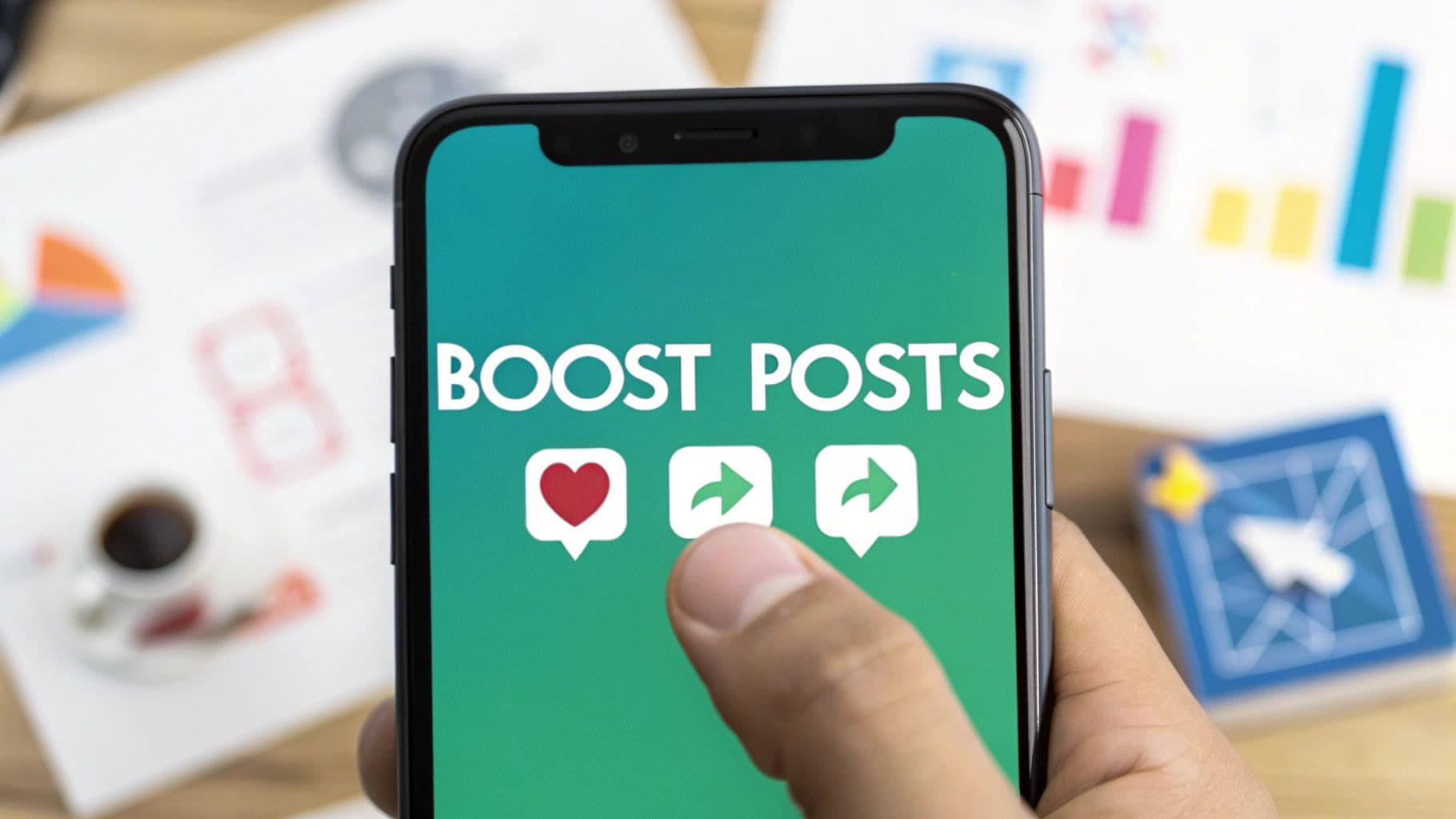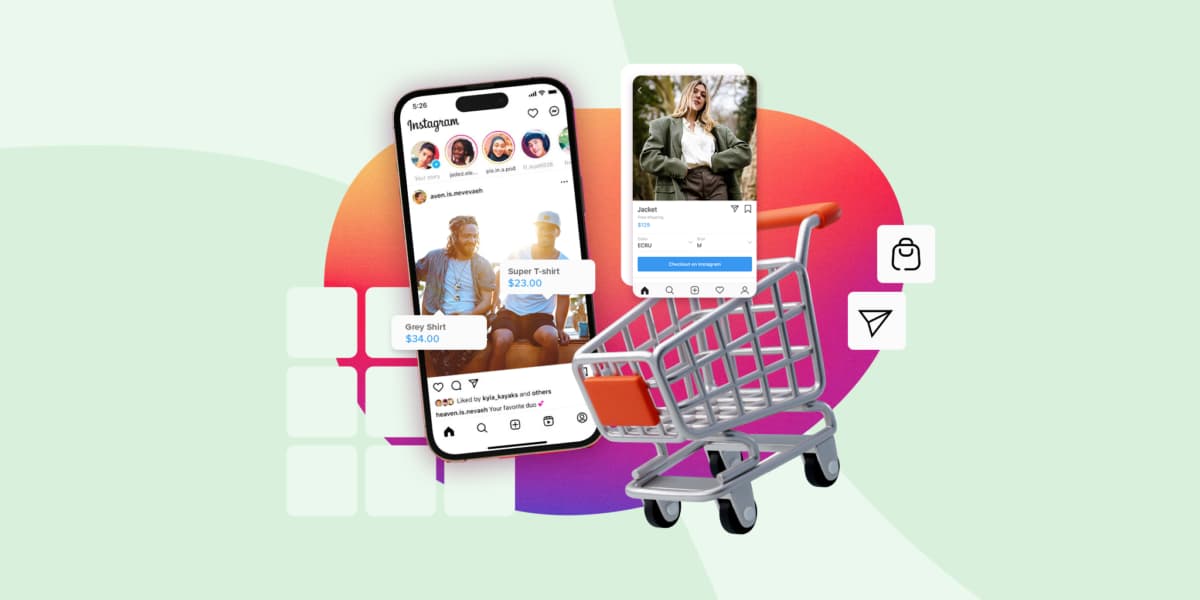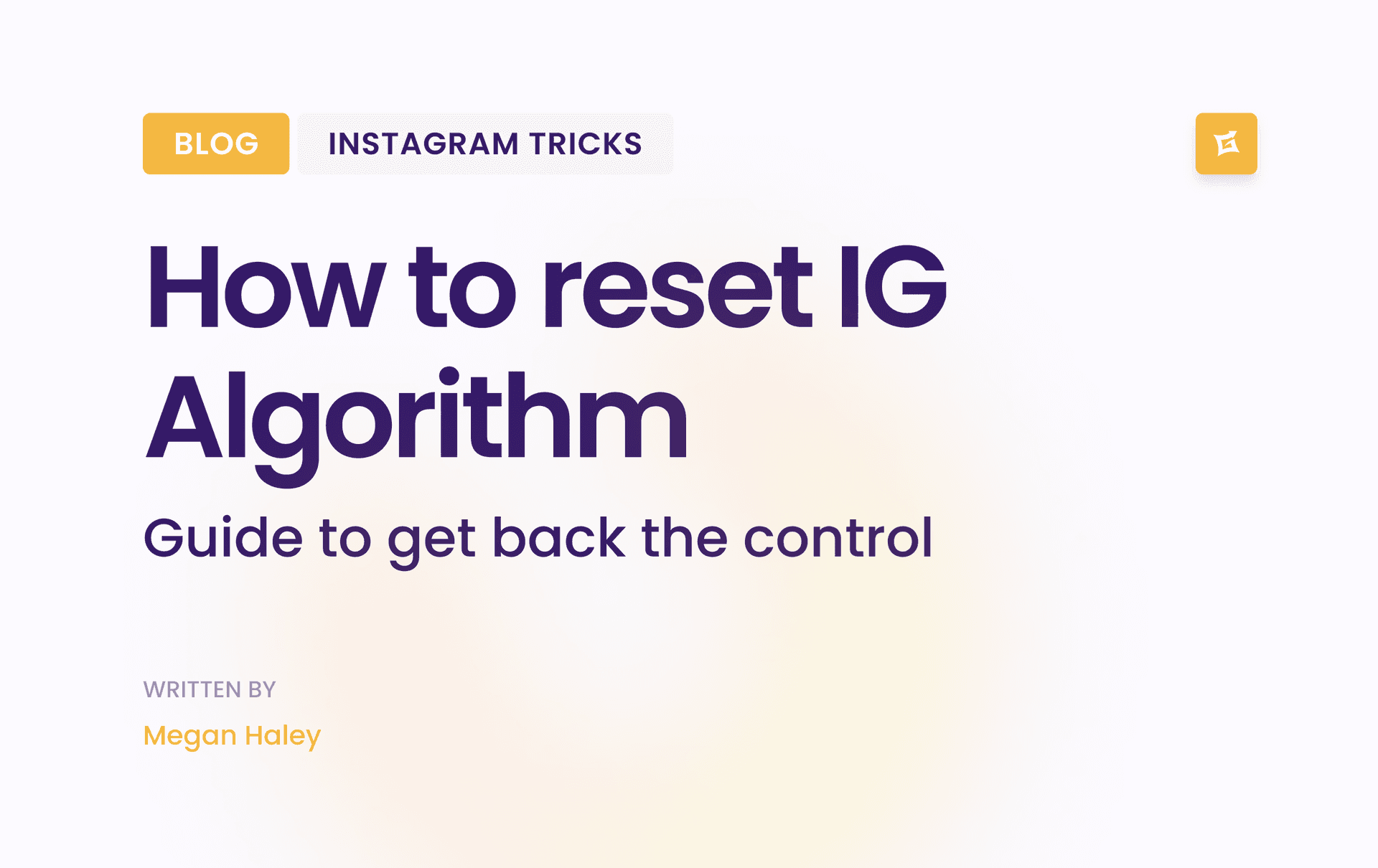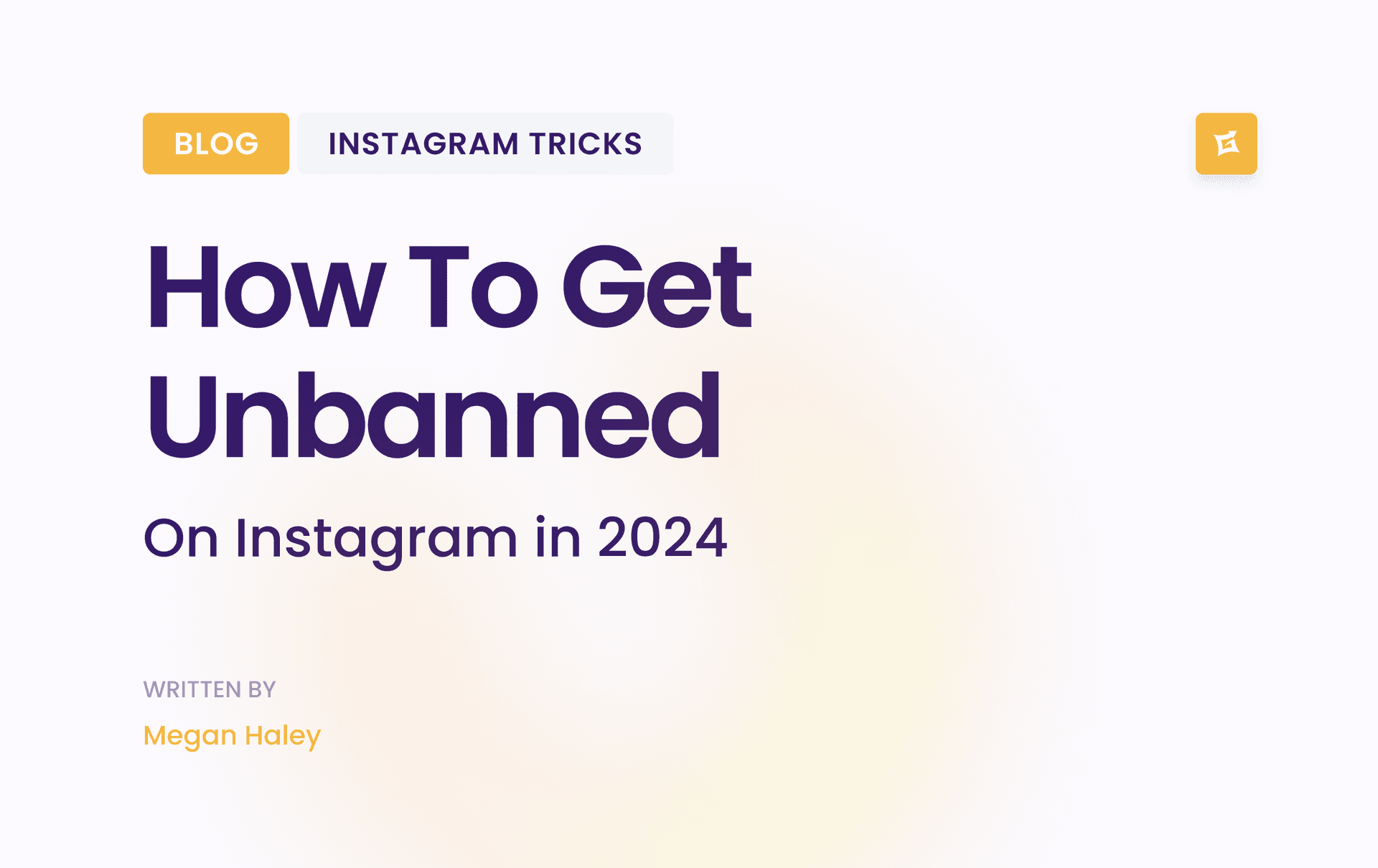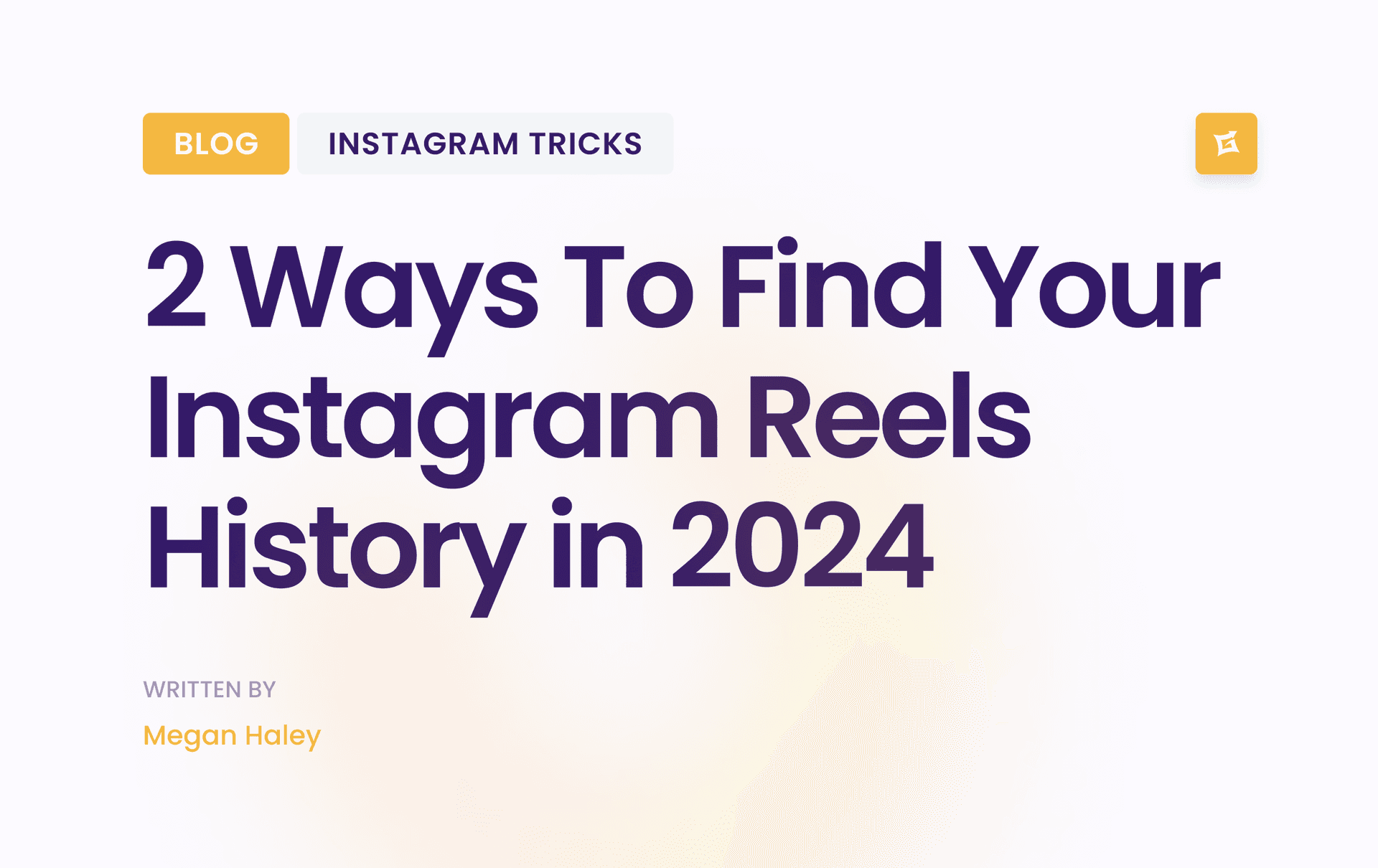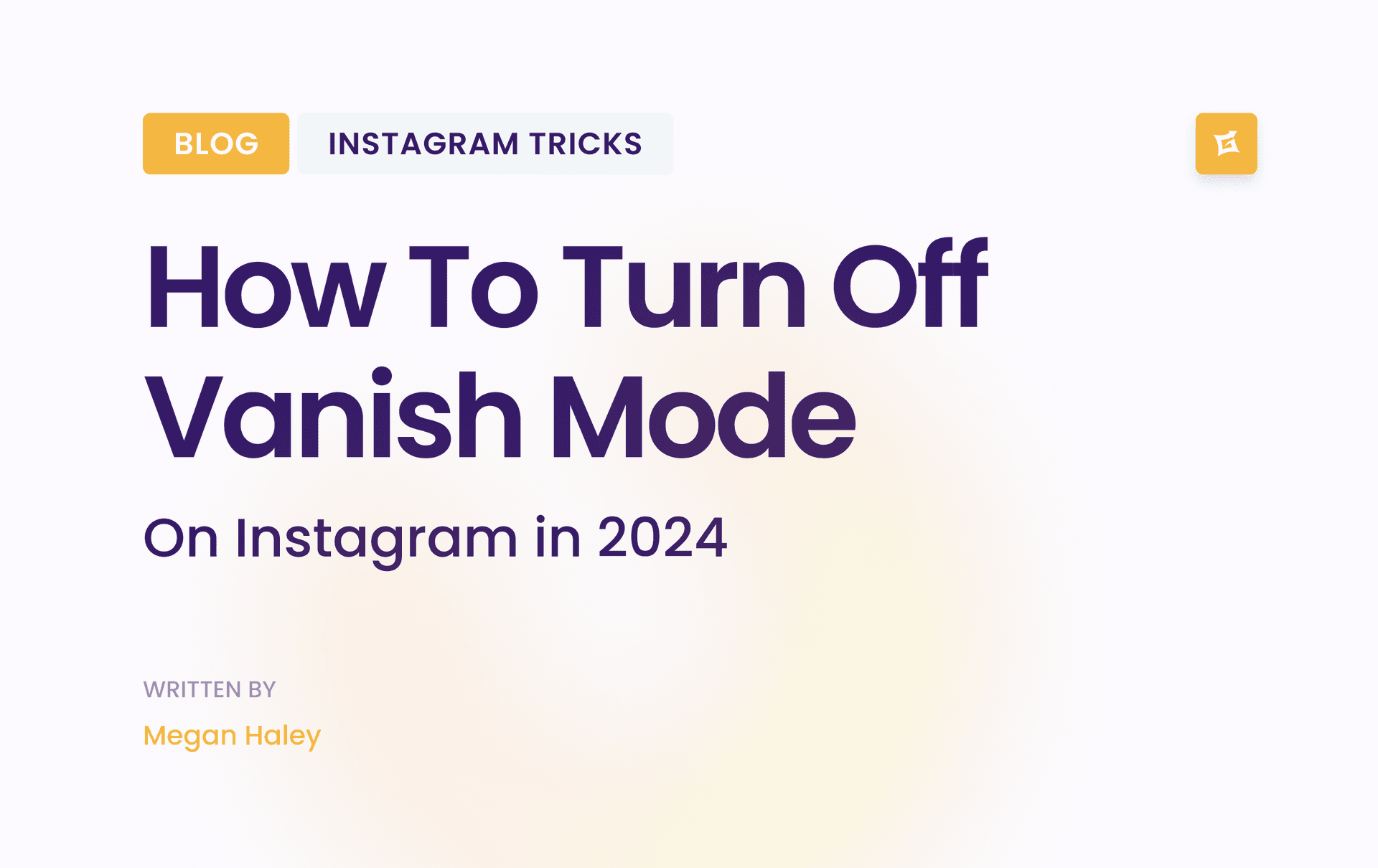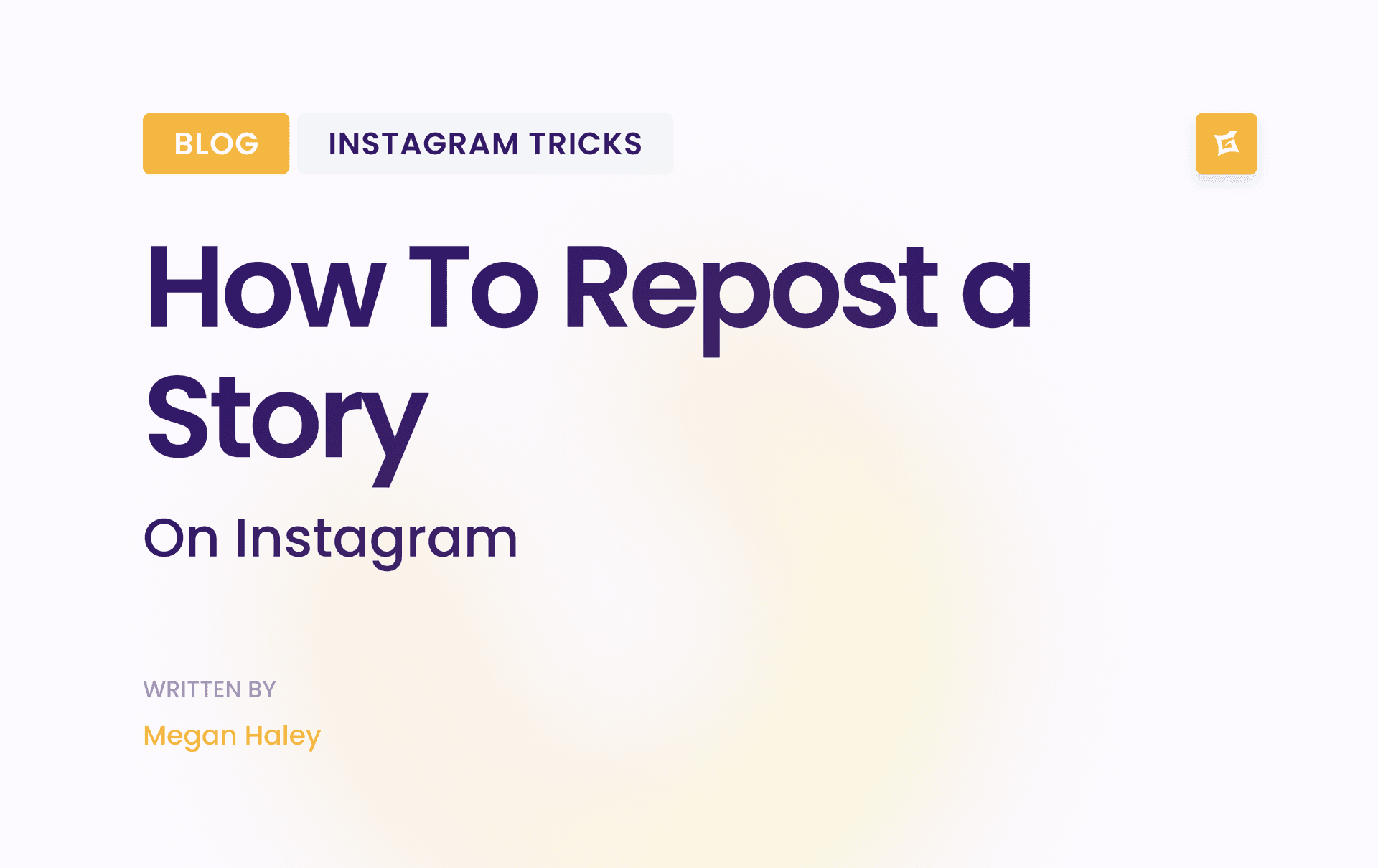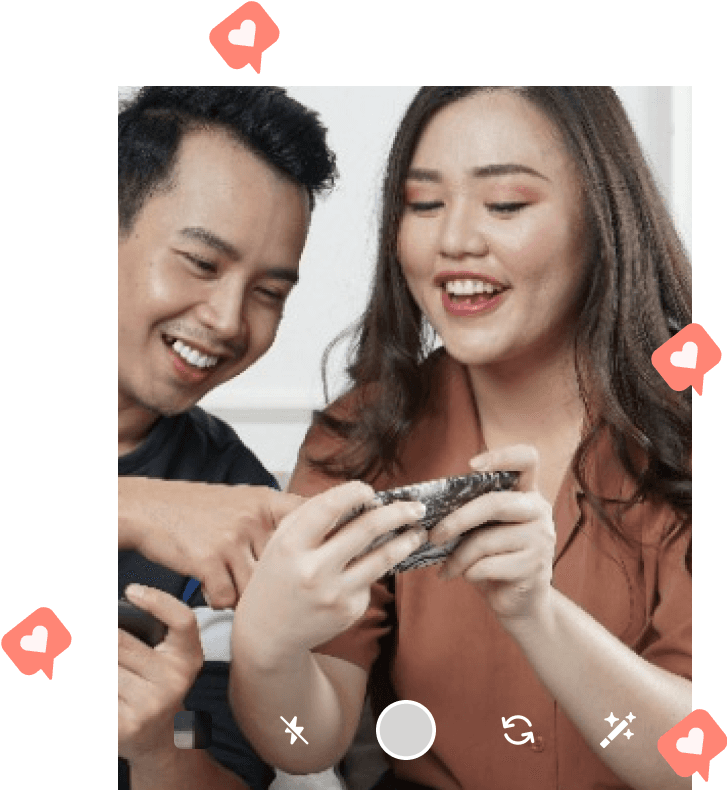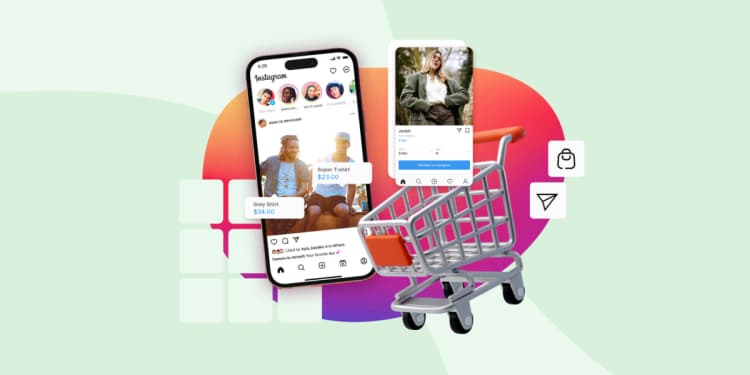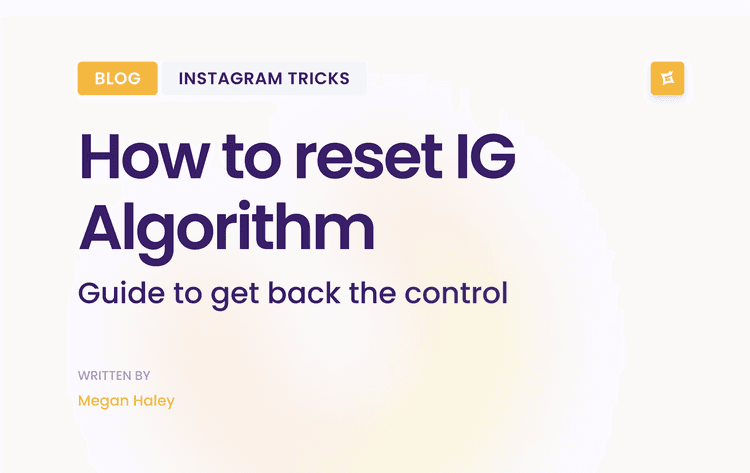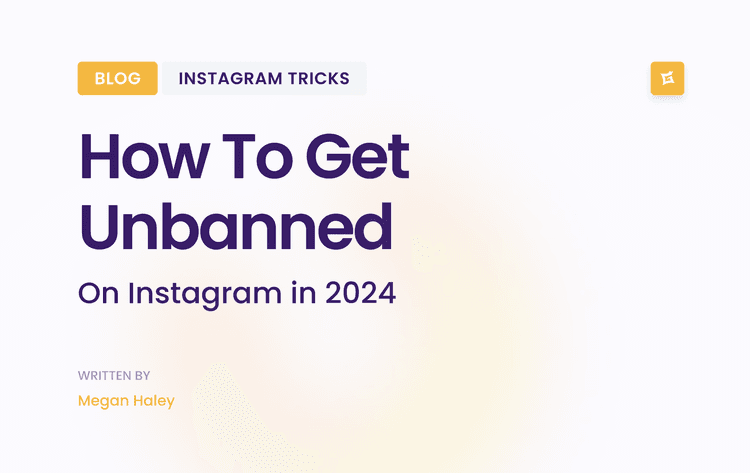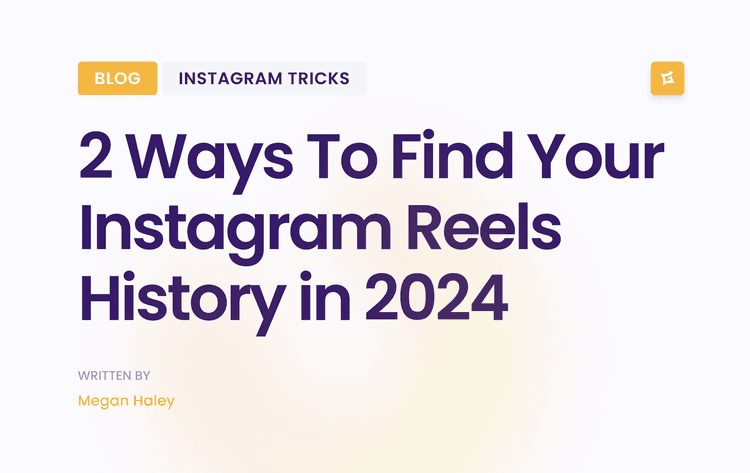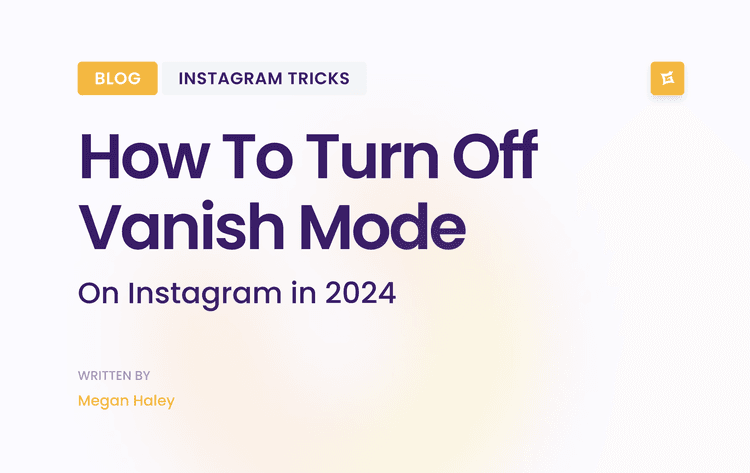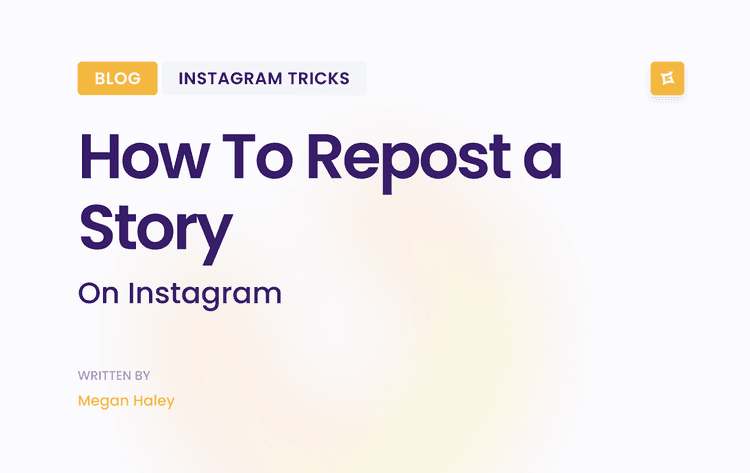Laying the Groundwork for Effective Promotion
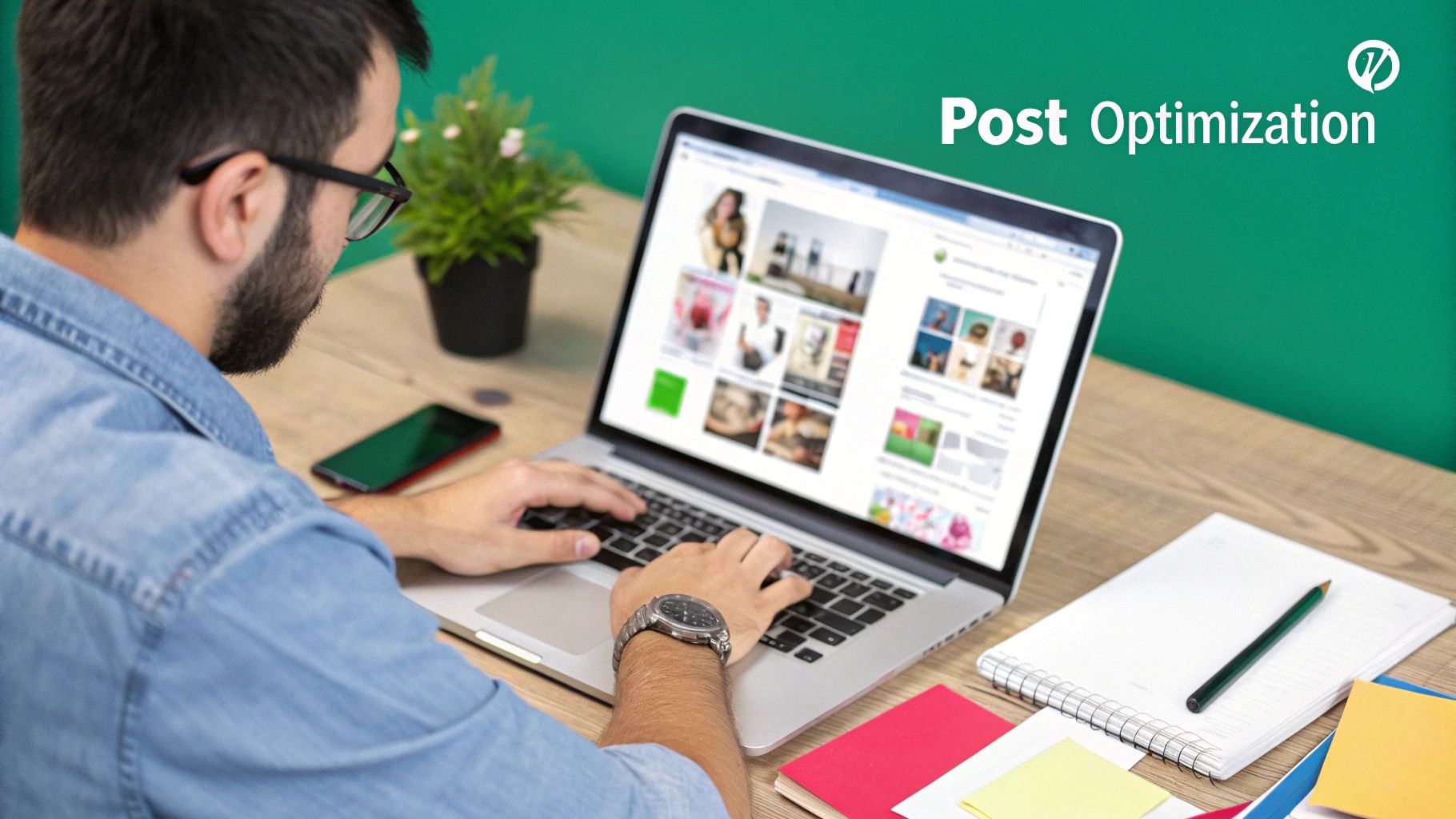
Jumping straight into paid ads without a solid plan is like building a house on a shaky foundation. It’s just not going to work. To make sure every dollar and every minute you spend actually delivers results, you’ve got to get your account ready and be crystal clear on what you’re trying to achieve.
This initial effort is what makes everything else click into place.
Your first stop? Your Instagram profile. Think of it as your digital storefront or your business card. If it’s messy, incomplete, or confusing, people will bounce before they even see your amazing content.
Optimize Your Profile for Promotion
Your profile is the first impression you make on a potential new follower. You’ve got about three seconds to convince them you’re worth their time.
Start with your profile picture. If you're a personal brand, it needs to be a clear, high-quality headshot. For businesses, your logo is non-negotiable.
Next up, that bio. Don’t just list what you do—tell people the value you provide. Make it benefit-driven. A simple but powerful formula is: "I help [your audience] do/achieve [the result]."
And don't forget your "link in bio." This is prime real estate! It's the only clickable link on your profile, so use it strategically to send people to your blog, a hot new product page, or a special offer.
Define Your Audience and Goals
You can't hit a target you can't see. And you can't connect with an audience you don't understand. Vague targeting like "women aged 25-40" is a recipe for disaster. You need to go deeper and create detailed audience personas. What are their interests? What keeps them up at night? What other accounts do they follow?
> Your promotional efforts are only as good as your understanding of the audience. Knowing their specific challenges allows you to create content that resonates deeply, making your promotions feel less like ads and more like solutions.
Once you know who you're talking to, you need to decide what you want them to do. Setting clear, measurable goals is the only way to know if your promotions are actually working. These goals will be your North Star.
Some common goals you might have are:
Increasing website traffic: Get people off of Instagram and onto your blog or landing page.
Generating leads: Convince users to sign up for your email list or download a freebie.
Boosting sales: Promote a specific product or service to drive direct purchases.
Growing brand awareness: Simply reach new eyeballs to grow your follower count and visibility.
Each goal requires a totally different playbook. A post designed to drive traffic needs a killer call-to-action (CTA) to get that click, while a brand awareness post might be all about encouraging shares and comments to maximize reach.
Getting a handle on the fundamentals of digital marketing for beginners can provide a broader context for these strategies. And to keep it all organized, a well-planned Instagram content calendar is a game-changer, ensuring every single post serves a purpose.
Mastering Organic Growth and Engagement
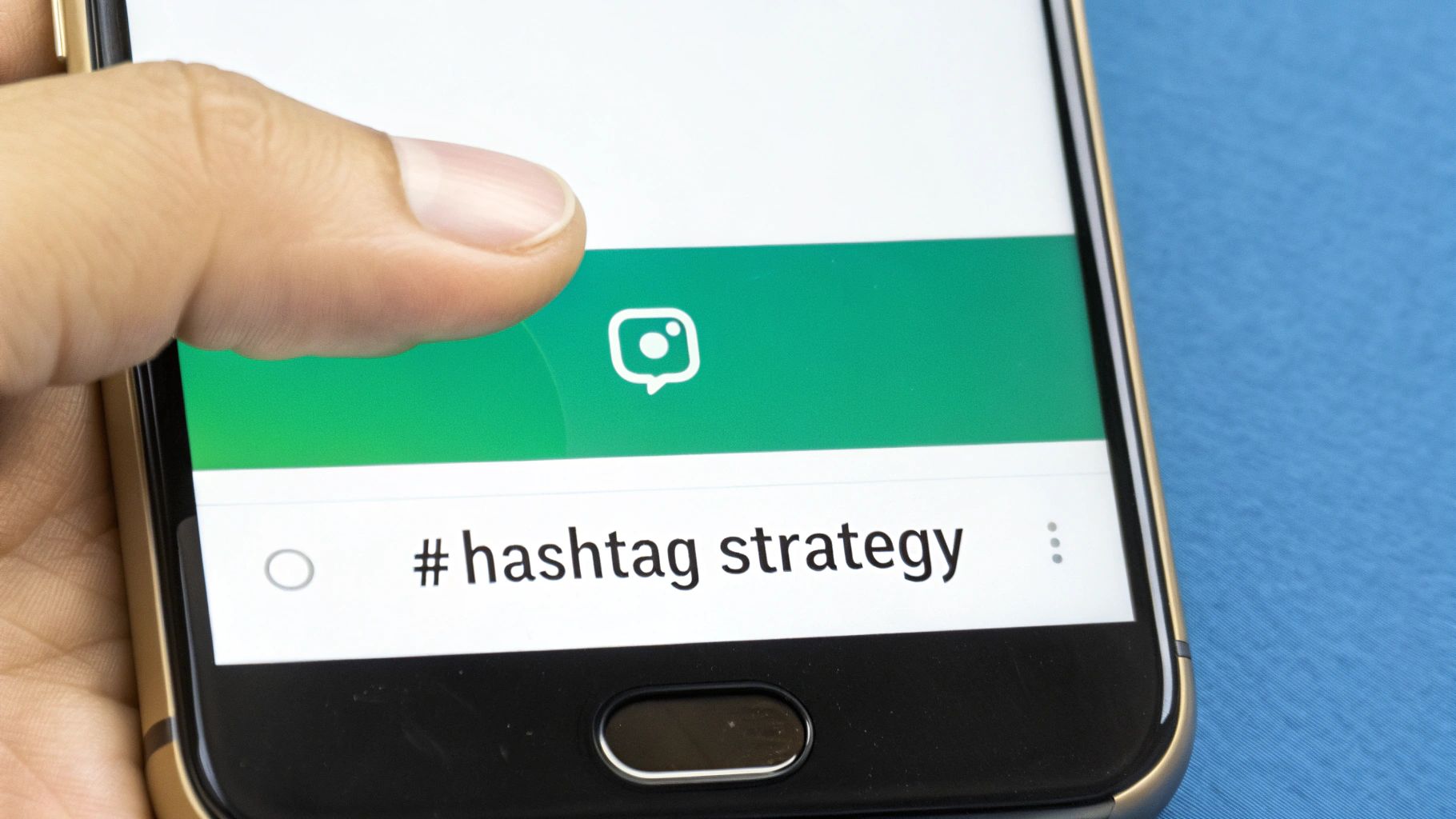
While paid ads can give you a quick shot in the arm, organic promotion is where sustainable, long-term Instagram growth really happens. It’s all about building an authentic community that trusts you, interacts with your content, and ultimately becomes your biggest advocate—without you spending a dime on ads.
The whole game changes when you stop thinking about "promotion" and start thinking about "connection." Every single post should be a conversation starter, a solution to a real problem, or a spark of inspiration for your target audience. Solid social media content planning strategies are the foundation for making this happen consistently.
Crafting Content That Gets Shared
Let’s be honest, shareability is the holy grail of organic growth. When someone shares your post, they're not just giving you a signal boost; they're giving you a personal endorsement. To get there, you have to move beyond posting a simple photo and start using formats designed for genuine engagement.
This is more critical now than ever. With platform engagement rates dropping by about 28% year-over-year thanks to a firehose of content and algorithm tweaks, you can't just post and pray. You need a plan.
Right now, Reels are the undisputed champs for reach and comments. Meanwhile, carousels are absolute gold for getting saves—a super-strong signal to the algorithm that you're posting high-value stuff.
Here are a few formats that consistently get shared:
Educational Carousels: Break down a complex idea into easy-to-digest slides. Think "5 Mistakes to Avoid When..." or a quick, swipeable tutorial.
Relatable Reels: Jump on a trending audio track to share a funny industry insight or a common struggle your audience can connect with.
Inspirational Quotes: It might sound cliché, but a well-designed graphic with a quote that truly hits home for your audience can travel far and wide.
The Art of the Engaging Caption
A killer visual makes people stop scrolling. A compelling caption makes them stay and talk. Your caption is your chance to add context, tell a quick story, and directly ask people to engage. It's time to stop writing lazy, one-sentence descriptions and treat your captions like valuable mini-blog posts.
The secret sauce is ending with a clear call-to-action (CTA) that does more than just fish for a "like."
> Pro Tip: Never leave your audience hanging. Always end your caption with an open-ended question to get comments flowing. Instead of saying, "Here’s our new product," try asking, "We’re so excited about our new product! What feature are you most looking forward to trying?"
That small change transforms a one-way announcement into a two-way conversation. Another great move is prompting users to tag a friend who'd find the post useful, which is a direct injection of organic reach. For a deeper dive, our guide on how to increase Instagram engagement organically has even more tactics.
Uncovering Niche Hashtags
Hashtags aren't just for visibility; they're for discoverability by the right people.
Using a massive tag like #marketing (with over 70 million posts) is like shouting into a hurricane. Your post is gone in a flash. The real magic is in the niche and community-specific hashtags where your ideal followers are actually hanging out.
How do you find them? Start by doing some digital sleuthing. Check out accounts that are similar to yours or ones that your target audience loves. See what hashtags they're using on their best-performing content.
Your sweet spot is usually hashtags with somewhere between 10k and 200k posts. That's big enough to have an active audience but small enough that your content won't get instantly buried. A good strategy is to mix a handful of these niche tags with one or two broader ones to get the best of both worlds.
Navigating Instagram's Paid Promotion Tools
While building an organic following is the foundation of a solid Instagram strategy, paid promotion is the jet fuel. When you’re ready to really scale your reach and get your best content in front of a laser-focused audience, it’s time to put some money behind your posts.
This is the point where you stop hoping the right people see your content and start ensuring they do. Instagram's paid tools are incredibly powerful, but knowing which one to use—and when—is the key to avoiding wasted cash and actually seeing a return on your investment.
And the potential impact is huge. A staggering 98% of marketers say Instagram gives them the best ROI of any social platform, and 80% of users say it helps them decide what to buy. A smart paid strategy is a direct line to your business goals. You can dig into more stats about Instagram's influence on brand marketing at Dreamgrow.com.
The Boost Post Button: Quick and Easy Reach
You’ve definitely seen it—that little blue "Boost Post" button sitting right under your posts. This is Instagram's most accessible promotion tool, built for one thing: simplicity.
Think of it as the express lane for advertising. In just a few taps, you can pick a goal (like more profile visits or website clicks), choose a basic audience, set a budget, and you're off.
The Boost Post button is your best friend when:
You're amplifying a winner: Got a post that's already crushing it with organic engagement? Boosting it gives that post an extra push to a wider audience that looks a lot like your current followers.
You need quick brand awareness: If the goal is simply to get more eyeballs on a post without a complicated sales funnel, boosting is a dead-simple way to increase visibility.
You're just testing the waters: For anyone completely new to paid social, it’s a low-risk way to get comfortable with the process before jumping into the deep end.
Meta Ads Manager: The Professional Powerhouse
When your goals get more specific and your targeting needs to be razor-sharp, it's time to graduate to Meta Ads Manager. This is the central command center for running seriously sophisticated ad campaigns across both Facebook and Instagram.
Sure, the learning curve is a bit steeper, but the level of control you get is on another planet. With Ads Manager, you can do things the Boost button can only dream of, like A/B testing different ad creatives, running retargeting campaigns, or building incredibly specific custom audiences.
> Ads Manager is where you move beyond simple promotion and start building strategic campaigns. You can create "lookalike" audiences based on your best customers or retarget people who have visited your website, turning casual interest into actual conversions.
This tool is non-negotiable when your objectives are tied directly to business results, like generating leads, driving app installs, or making e-commerce sales.
Deciding between these two tools can be tricky, so here’s a quick breakdown to help you choose the right one for your specific needs.
Boost Post vs Meta Ads Manager: A Comparison
Ease of Use: Boost Post is very simple and requires just a few clicks, whereas Meta Ads Manager is more complex and requires learning.
Best For: Boost Post is best for quick visibility and amplifying content, while Meta Ads Manager is ideal for strategic, goal-oriented campaigns.
Targeting Options: Boost Post offers basic targeting such as location, age, gender, and interests, whereas Meta Ads Manager provides advanced targeting, including behaviors, custom audiences, lookalikes, and retargeting.
Ad Placements: Boost Post has limited placements, including Feed, Stories, and Explore, while Meta Ads Manager gives full control across all Meta placements.
Creative Control: Boost Post is limited to existing posts, whereas Meta Ads Manager allows full creative flexibility and A/B testing.
Objectives: Boost Post covers basic objectives like profile visits, DMs, and website clicks, while Meta Ads Manager supports comprehensive objectives such as conversions, leads, sales, and app installs.
In short, if you need a quick and simple way to get more eyes on a post, the Boost button works. But for anything more strategic that requires precise targeting and measurement, Meta Ads Manager is the only way to go.
To give you a better idea of what to expect, check out this breakdown of performance metrics across different ad formats. It can help you determine where to allocate your budget.
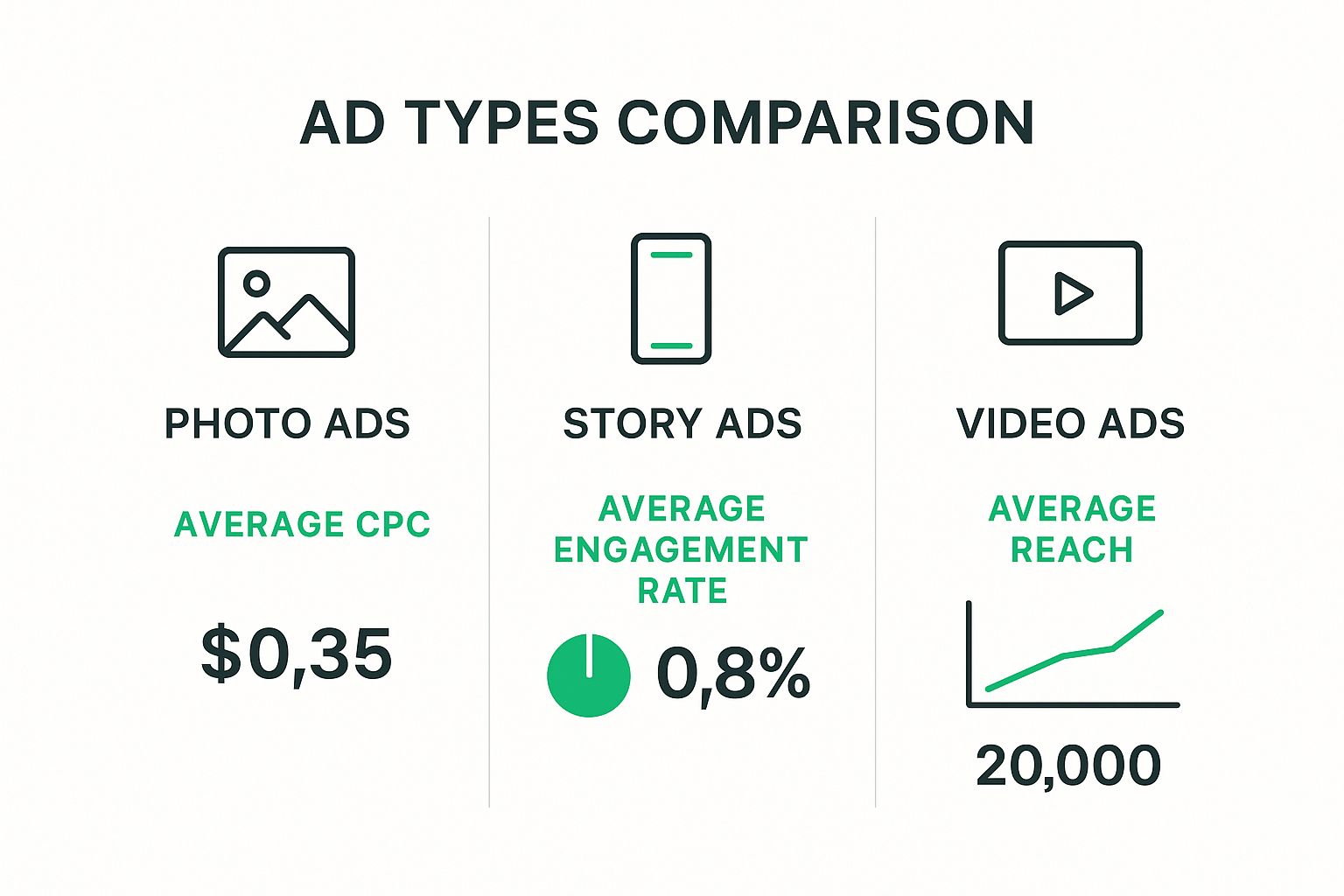
As you can see, while video ads might cost a bit more upfront, they often deliver much better reach and engagement. That makes them a killer choice for grabbing attention in a crowded feed.
Building Strategic Brand Partnerships
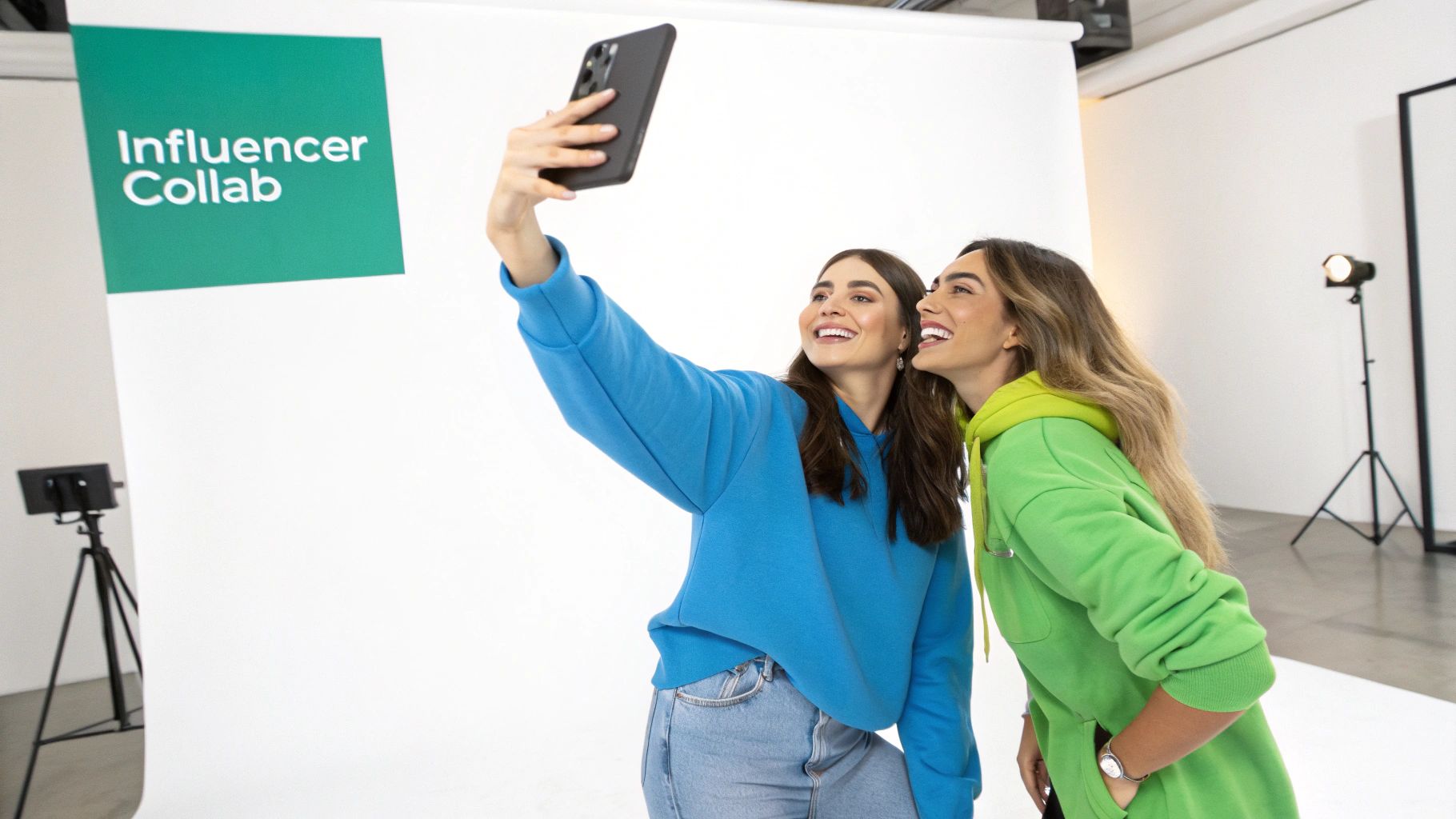
One of the absolute fastest ways to get your Instagram posts in front of the right people is to tap into a community that already exists. Why build an audience from scratch when you can partner with someone who has already earned their trust?
That's the core idea behind strategic partnerships. You’re essentially borrowing the credibility and reach of another brand or creator who is already talking to your ideal followers. It’s a classic win-win. You get your content in front of a fresh, highly relevant audience, and your partner gets great content (or compensation) that adds value to their own community.
Finding the Right Partners to Promote Your Posts
Now, not all partnerships are created equal. The goal isn't just to find an account with a ton of followers; it's about finding the right account. You need to look for brands or creators whose audience is a mirror image of yours and whose values align with what your brand stands for.
My advice? Think smaller to win bigger. While it’s tempting to chase the mega-influencers, micro-influencers (those with roughly 10k-100k followers) are often where the real magic happens. They tend to have more authentic connections with their followers, which translates into much higher engagement. Their communities are usually more niche and tight-knit.
> Influencer marketing is an absolute powerhouse for getting your posts seen, and the numbers don't lie. Micro-influencers boast an average engagement rate of 3.86%, which completely blows past the 1.21% average for macro-influencers. With 61% of consumers trusting recommendations from influencers over brand ads, the impact is undeniable. You can dive deeper into the stats on Instagram influencer marketing at Sprinklr.com.
Once you've got a shortlist of potential partners, it’s all about the outreach. A generic, copy-pasted DM is the quickest way to get ignored.
Crafting a Winning Collaboration Pitch
That first message is your one shot to make a good impression, so make it count. The best way to do that is by showing you’ve actually done your homework.
Here’s a simple framework for a pitch that actually gets a response:
Get personal right away. Start by mentioning a specific post of theirs you genuinely enjoyed. It immediately shows you’re a real person and a fan, not just another brand trying to get something from them.
Clearly state the value for them*. What’s in it for their audience? Why would a collaboration with you be a good move for their brand?
Have a specific idea in mind. Don’t just slide into the DMs with a vague "let's collab." Suggest something concrete, like a sponsored post, a joint Reel, or even an account takeover for a day.
Make it incredibly easy to say yes. Keep the first message short and to the point. End with a simple, low-pressure question like, "Would you be open to hearing a bit more about this?"
If you get a yes, then you can get into the nitty-gritty. This is where you’ll hash out the terms, outline what needs to be delivered, and—most importantly—be transparent. Every piece of sponsored content must follow FTC guidelines. That means using clear hashtags like #ad or #sponsored in the caption. This isn’t just about rules; it’s about maintaining the trust of both your audience and theirs, which is the entire point of the partnership in the first place.
Analyzing and Optimizing Your Performance
Launching a promotion is just the first step. The real magic happens when you start listening to what the data is telling you.
This isn't a "set it and forget it" game. The best results come from a constant cycle: act, analyze, and then refine your approach. When you dig into your performance, you can stop guessing what works and start making smart, strategic decisions that actually move the needle.
This data-driven mindset is exactly how you turn a small budget into significant growth. Instead of just boosting every post and hoping for the best, you learn to put your money behind the content formats, topics, and audiences that are proven winners.
Decoding Your Instagram Insights
For your organic posts, your first port of call should always be Instagram Insights. This is the platform's own built-in analytics tool, and it gives you a direct look at how people are actually interacting with your content. It might seem like a wall of numbers at first, but you only need to zoom in on a few key metrics to get the story.
Here’s what I always look for and what it really means:
Reach: This is simple: how many unique accounts saw your post. A high reach is a fantastic sign that your content—especially when paired with the right hashtags—is breaking free from your follower bubble and finding new eyeballs.
Engagement Rate: This metric lumps together likes, comments, shares, and saves. It's the percentage of people who saw your post and cared enough to do something about it. Think of it as a powerful signal of your content's quality.
Saves: This one is huge. When someone saves your post, they're bookmarking it to come back to later. It's one of the strongest positive signals you can send to the Instagram algorithm, telling it your content is genuinely valuable.
Shares: This is the ultimate compliment and the purest form of organic promotion. A share means someone found your content so useful that they were willing to put their own reputation on the line and send it to a friend or post it to their Story.
> By checking these metrics regularly, you'll start to see patterns emerge. Maybe you notice your carousels consistently get way more saves than your single-image posts. That's your audience telling you, loud and clear, that they want more of that in-depth, educational stuff. To really get a handle on this, a complete guide to using Instagram analytics for business growth is essential reading.
Making Sense of Paid Ad Metrics
When you're running paid promotions through Meta Ads Manager, the data gets even richer. Now you're not just looking at likes and comments; you're tracking how every dollar you spend translates into real business results.
Get laser-focused on these critical numbers:
Cost Per Click (CPC): How much are you paying every time someone clicks on your ad? If your CPC is creeping up, it could be a red flag that your ad creative isn't hitting the mark or your audience targeting is a bit off.
Click-Through Rate (CTR): This is the percentage of people who saw your ad and actually clicked. A healthy CTR tells you the ad is relevant and doing its job of grabbing attention in a crowded feed.
Conversion Rate: This is the bottom line. Of the people who clicked, what percentage actually did the thing you wanted them to do (like buy a product or sign up for your email list)? This is the ultimate measure of success.
If you spot an underperforming ad—maybe it has a sky-high CPC and a dismal conversion rate—don't just pull the plug. It's time to optimize.
Duplicate the ad campaign and change just one thing. Tweak the headline. Swap out the image. Try a different audience. This process is called A/B testing, and it's the single most effective way to systematically improve your ads over time. It ensures your promotional efforts get smarter and more profitable with every campaign you run.
Common Instagram Promotion Questions
Even with a killer strategy, questions are bound to pop up when you start putting money behind your Instagram posts. Getting the right answers helps you move forward with confidence and, more importantly, stops you from wasting time and money on common mistakes.
Here are the direct, no-fluff answers to the questions we get asked all the time.
How Much Should I Spend to Promote an Instagram Post?
There’s no magic number here. Your budget is going to depend entirely on your industry, your specific goals, and how crowded your target audience is.
If you're just dipping your toes in, a great starting point is to set aside a small test budget. Think $5 to $10 per day on a simple "Boost Post" campaign.
This isn't about getting massive results overnight. It's about gathering data. This kind of modest investment lets you see how your audience responds without a huge financial risk. Once you see what's working, you can scale up. Always, always focus on your Cost Per Result—whether that's a click, a follow, or a message—not just the total spend.
What Kind of Posts Get the Best Promotion Results?
Hands down, video content—especially Reels—is crushing it right now for reaching new people. Instagram’s algorithm is heavily favoring short-form video, so you get a powerful organic and paid push.
But if you want to build a deeper connection and get people to actually engage, carousels are your best friend. They work incredibly well for educating, telling a story, or solving a problem. People save them for later, which is a huge green flag for the algorithm.
When you're running paid ads, the winning formula is almost always a combination of an eye-catching visual with a crystal-clear call-to-action (CTA).
> The best promoted posts never feel like ads. They're valuable pieces of content first—entertaining, educational, or inspiring. That value-first approach is what stops the scroll and gets people to act.
Why Is My Promoted Post Not Getting Engagement?
If your promoted post is a ghost town, the first thing to check is your audience targeting. Is it way too broad, hitting people who couldn't care less? Or is it so hyper-specific that the algorithm is struggling to find anyone? Nailing down your audience’s interests and demographics is often the fastest fix.
Next, take a hard look at your creative. Is the image or video genuinely interesting enough to stop someone from scrolling? Does your caption hook them and then clearly tell them what to do next? Sometimes, a simple tweak to a headline or swapping out a visual can completely change the game.
Finally, check your ad placements. Dive into your results and see where your ad is actually performing—is it the Feed, Stories, or the Explore page? Once you know, you can adjust your settings to focus your budget on the placements that deliver.
Ready to stop guessing and start growing? Gainsty uses advanced AI and expert strategies to help you get more real, engaged followers on Instagram organically.
